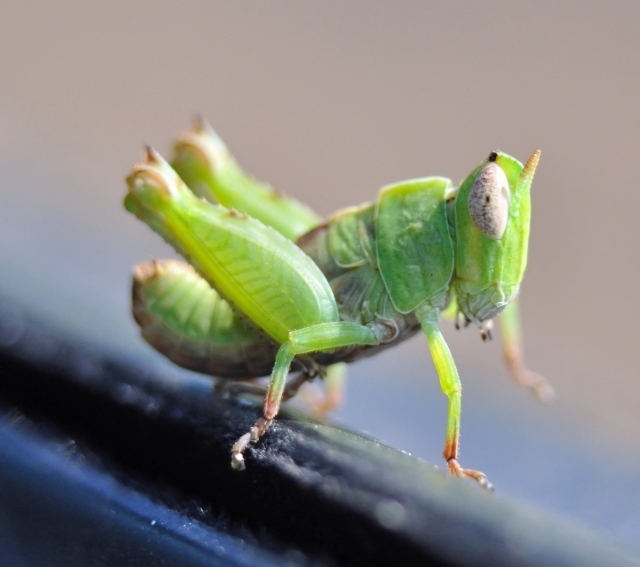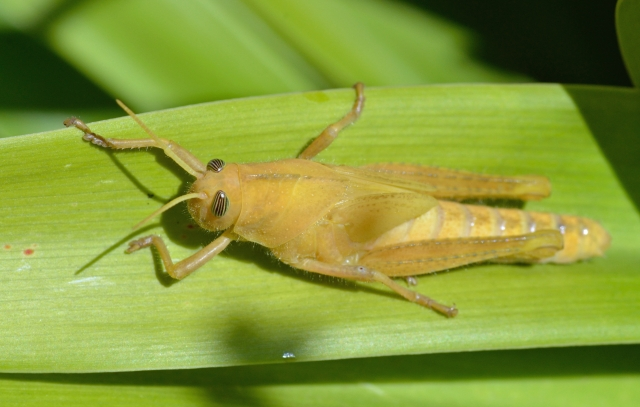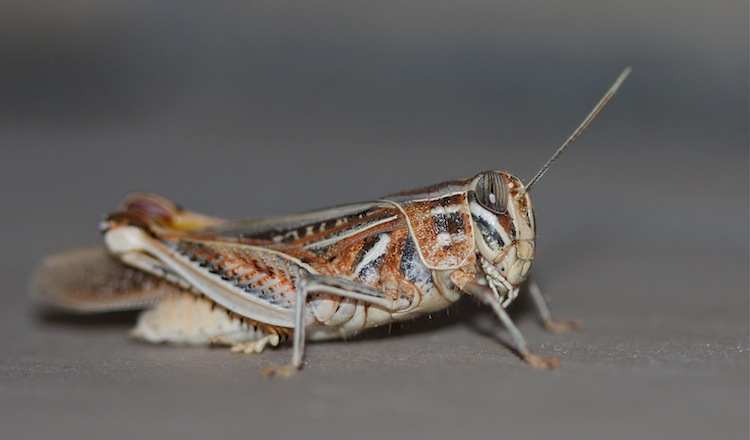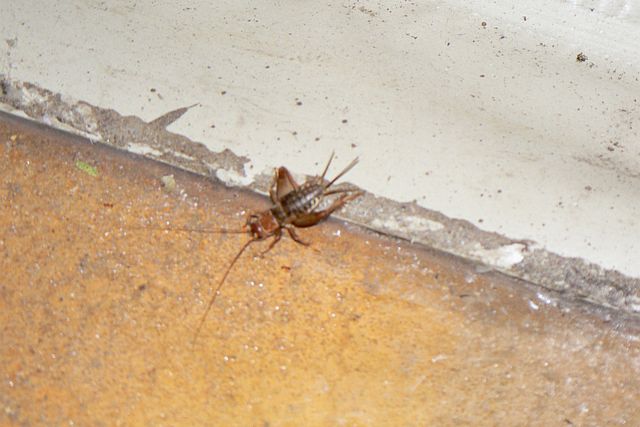Bushhopper without a name Lophothericles sp. Possibly
P. modestus
Superfamily Eumastacoidea. Family: Thericleidae. Subfamily: Thericleinae. Tribe: Lophothericleini

- Lophothericles.jpg (191.65 KiB) Viewed 2555 times
Female, Kruger National Park, Gomondwane loop © BluTuna
Thericleidae are a family of tiny, flightless stocky grasshoppers with very short antennae and powerful hind legs in the superfamily Eumastacoidea.
Members of the superfamily Eumastacoidea are commonly referred to as monkey grasshoppers because of the characteristic shape of their heads and their peculiar stance, in which they spread their hind legs when sitting. Eumastacoids are relatively small in size (less than 4.5 cm) and can be recognized by their short antennae; lack of a basioccipital slit in the head; spined, serrulate, or dorsally tuberculate metatarsi; the lack of an abdominal tympanum; and highly complex male phallic structures.
Currently, seven families (two families in Southern Africa: Euschmidtiidae and Thericleidae) with 268 genera and 1045 species are recognized, most of which are known from the tropics.
The Thericleidae are uniquely Afrotropical relatives of the true grasshoppers (Acroidea), many of which - largely because they are so rarely noticed - have never been recorded since their original descriptions. Only one single species has been assessed by the IUCN,
Acanthothericles bicoloripes (Critically Endangered) - and most have tiny known ranges and limited mobility, and seem primed for silent extinctions. Despite their diversity, there is currently little or no taxonomic expertise for this group. It is impossible to identify these little hoppers in the field to genus or species level. And many genera display sexual dimorphism. Females are often less vividly colored than males. Most likely the PGW field guide has a couple of errors in their Thericleidae chapter (as per the experts).

The family Thericleidae is characterized by a short and stout body, short rostrum of the head with a furrowed apex, short hind femur with heavy dorsal spines, and hind tibia with four (some sources say two) well‐developed apical spurs. Consisting of six subfamilies with 57 genera and 220 species, thericleids can be found mostly on trees, shrubs or bushes, often in thickets or woodland in dry habitats south of the Sahara in Africa.
Forty-one species are decribed in the genus
Lophothericles, distributed through southern and East Africa, with 22 species native to southern Africa.
Sadly this hopper does not have a common name. But with insects, it is extremely unusual to find a species which has its very own common name. Sometimes, this applies to the entire family or as in this case to the genus
Lophothericles.
The first element of the scientific generic name part 'Thericles' is a common ancient Greek name, probably derived from Greek verb θερίζω (therizo) meaning "to mow, to reap, to harvest, as well as "to do summer work". It is ultimately derived from the Greek noun θέρος (theros) meaning "summer". The second element of this name is derived from Greek κλεος (kleos) meaning "glory, fame". As such, the meaning of this name is "glorious summer harvester". The part 'lopho' is an affix (word-forming element) used in science from 19c. Ancient Greek λόφος (lóphos) refers to a bird's crest or a neck of draught animals and men. For our hopper, it refers to the crest on the pronotum.
How about 'Crested Glorious Summer Reaper' for a common name?

You are welcome to suggest your fav. common name

Links:
Biodiversity Explorer
http://orthoptera.speciesfile.org/Commo ... ID=1119041
https://www.inaturalist.org/projects/th ... servations
 © nan
© nan


 © BluTuna
© BluTuna © ExFmem
© ExFmem © Toko
© Toko